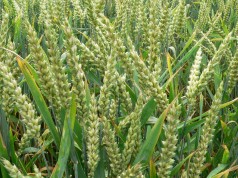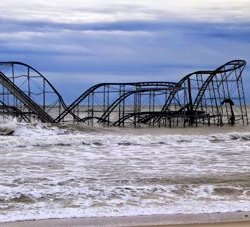 London – In a world where over 840 million go hungry every day, achieving food security goes beyond increasing global food production. Better food systems and sustainable consumption and production approaches are needed to achieve food security for all.
London – In a world where over 840 million go hungry every day, achieving food security goes beyond increasing global food production. Better food systems and sustainable consumption and production approaches are needed to achieve food security for all.
A new tool, the Think.Eat.Save Guidance Version 1.0 – released on May 23 by the United Nations Environment Programme (UNEP), the Food and Agriculture Organization of the United Nation (FAO) and the Waste and Resources Action Programme (WRAP) as part of SAVE FOOD Initiative and FAO-UNEP Sustainable Food Systems Programme – provides guidance to governments, local authorities, businesses and others on designing effective food waste prevention programmes.
Research shows that at least one-third, or 1.3 billion tonnes, of food produced each year is lost or wasted – an amount corresponding to over 1.4 billion hectares of cropland. Even a quarter of this lost food could feed the entire world’s hungry people.
According to the FAO, almost half of all fruit and vegetables is wasted each year. About 10 per cent of developed countries’ greenhouse gas emissions come from growing food that is never eaten, and food loss and waste amounts to roughly USD 680 billion in industrialized countries and USD 310 billion in developing countries.
“Food waste carries direct economic and environmental costs and depletes the natural resource base that underpins food production,” said UN Under-Secretary-General and UNEP Executive Director Achim Steiner.
“Today, diets are becoming more resource-intensive, and the way we buy and consume food is changing due to industrialization, the demands of a growing middle class, and the continued impacts of the economic crisis.”
“This first-of-its-kind guidance document on food waste prevention provides the technical expertise and impetus needed for a wide range of actors to take advantage of existing wisdom, catalyze action, and get a head start in tackling this critical issue,” he added.
Ensuring that all the world’s people have enough food is the vision of UN Secretary General Ban Ki-moon‘s Zero Hunger Challenge, and UNEP and the FAO are jointly charged under the challenge with reducing food loss and waste.
To this end, UNEP in partnership with FAO, Messe Düsseldorf GmbH, WRAP and others, launched “Think.Eat.Save: Reduce Your Foodprint” (www.thinkeatsave.org) – a global campaign to galvanize concerted action on food waste. In its first year, this campaign has engaged more than a million participants in awareness-raising activities, reached a diverse global network of followers, and provided a portal to showcase ideas and share resources.
The Think.Eat.Save Guidance Version 1.0 presents a full journey for users of the tool, beginning with the mapping and measuring of food waste and the development of national or regional policies and measures. In-depth modules then focus on programmes for food waste prevention in households and in the food supply chain.
The guidance document provides clear and comprehensive steps on scoping, planning, delivering and measuring food waste prevention programmes and activities at national, regional, business and household level. It has been built on proven experiences around the world, including that of the United Kingdom, where avoidable household food waste has been reduced by 21 per cent between 2007 and 2012.
The document published on May 23 was “Version 1.0”, to be enriched progressively as many more countries around the world begin to take on the challenge and reap the benefits of food waste reduction.
To this end, UNEP and FAO are recruiting pilot countries and cities without existing frameworks for food waste prevention to test the Think.Eat.Save Guidance Version 1.0 over the coming years. Technical and strategic support will be provided to pilot countries and cities, as they initiate, define, deliver and monitor food waste prevention programmes.
The document will evolve further with the development of the Food Loss and Waste Protocol for food waste measurement to support coherent global data collection, being led by the World Resources Institute (WRI).
This practical guide is launched in anticipation of the forthcoming Committee on World Food Security High Level Panel of Experts Food Losses and Waste in the Context of Sustainable Food Systems report, which supports concerted and collective action. It also contributes to the recently agreed development of a new component to the 10 Year Framework of Programmes for Sustainable Consumption and Production, which will be dealing with “sustainable food systems”.
To download the Guidance Document, visit:
www.thinkeatsave.org
Source: UNEP.
Notes:
Structure of the Guidance Version 1.0
Module 1: Mapping and measuring of food and drink waste
This Module enables the user to scope the problem, by quantifying what is known about food waste, where it arises, and its impacts. Through mapping exercises, users can identify opportunities, barriers, and potential partners for food waste reduction. Aimed at national or regional government, this provides a powerful basis for strategy development.



















